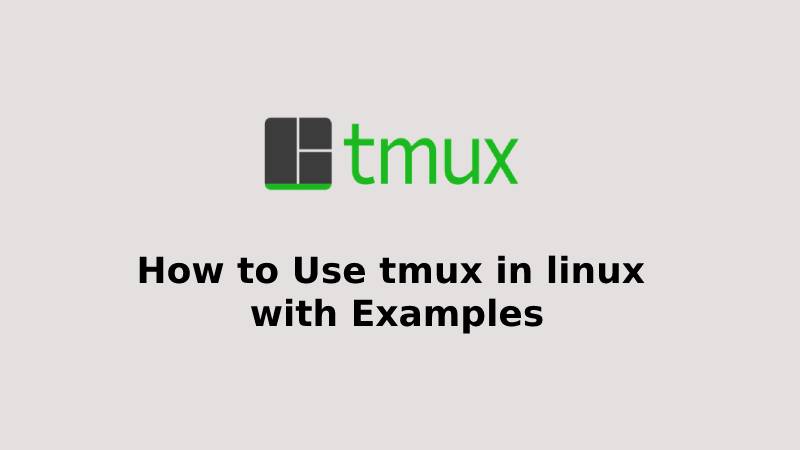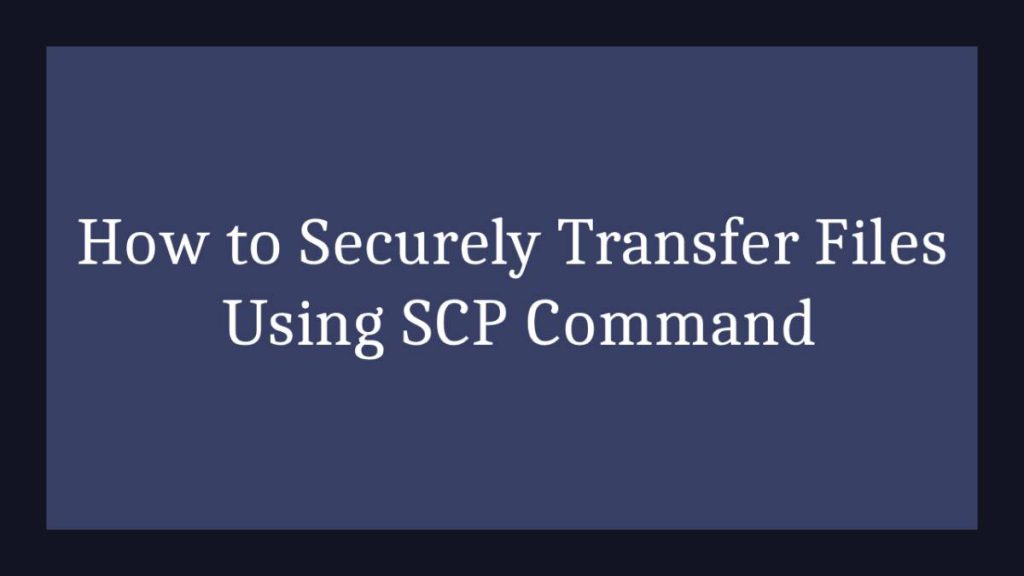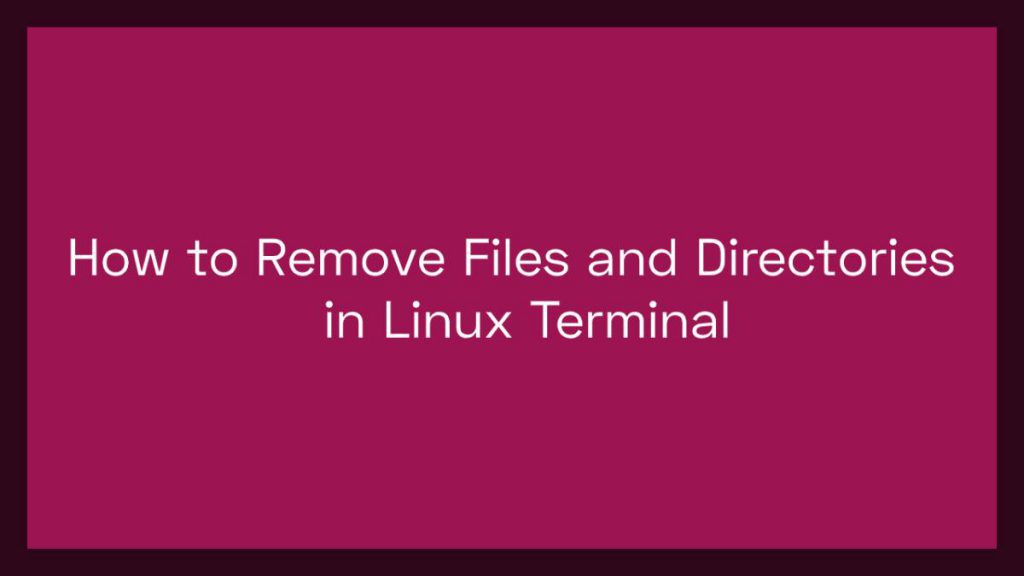Tmux (Terminal Multiplexer) in Linux is a powerful tool that allows you to manage multiple terminal sessions, windows, and panes within a single terminal. It is particularly useful for developers and system administrators who need to work with multiple terminal sessions simultaneously.
In this article, we will cover the basics of Tmux, including its installation, creating and managing sessions, working with windows and panes, and customizing Tmux to suit your workflow.
What is tmux?
Tmux, short for Terminal Multiplexer, is a command-line tool that allows users to manage multiple terminal sessions within a single terminal window. It is designed to enhance the productivity and workflow of developers and system administrators by providing a powerful set of features to manage and manipulate multiple terminal windows and panes.
Tmux works by creating multiple sessions, each of which can contain multiple windows, and each window can contain multiple panes. This allows users to switch between different sessions, windows, and panes within a single terminal window, without having to open multiple terminal windows or tabs.
Some of the key features of Tmux include:
- Multiple sessions: Tmux allows users to create and manage multiple sessions within a single terminal window, making it easy to switch between different tasks or projects.
- Multiple windows: Each Tmux session can contain multiple windows, which can be thought of as tabs in a web browser or text editor. This allows users to keep multiple tasks or projects open and organized within a single terminal window.
- Multiple panes: Each Tmux window can contain multiple panes, which can be thought of as split screens within a window. This allows users to view and interact with multiple terminal sessions or commands within a single window.
- Detachable and re-attachable sessions: Tmux sessions can be detached from and re-attached to as needed, making it easy to keep terminal sessions running even when disconnected from a server or machine.
- Customizable status bar: Tmux includes a customizable status bar that can be used to display information about the current session, window, or pane.
Overall, Tmux is a powerful tool that can greatly enhance the productivity and workflow of developers and system administrators, by allowing them to manage and manipulate multiple terminal sessions within a single terminal window.
How to Install Tmux in Linux
Before we get started with Tmux, we need to install it on our system. Tmux is available in most Linux distributions’ package repositories and can be installed using the package manager.
Installing Tmux on Ubuntu and Debian
To install Tmux on Ubuntu or Debian, use the following command:
sudo apt install tmuxInstalling Tmux on CentOS and Fedora
To install Tmux on CentOS or Fedora, use the following command:
sudo yum install tmuxInstalling Tmux on macOS
To install Tmux on macOS, you can use the Homebrew package manager:
brew install tmuxBasic Tmux Commands
Basic Tmux Commands:
Once Tmux is installed, you can start using it by running the tmux command. This will create a new session with a single window. Here are some basic commands to get you started:
tmux new-session: Create a new Tmux session.tmux attach-session: Attach to an existing Tmux session.tmux list-sessions: List all Tmux sessions.tmux detach: Detach from the current Tmux session.tmux kill-session: Kill the current Tmux session.
How to Start Your First Tmux Session in Linux
To start a new Tmux session, simply type tmux in your terminal:
tmuxThis will create a new Tmux session with a single window.
How to Create Named Tmux Sessions In Linux
Naming your Tmux sessions can be helpful when you have multiple sessions open at the same time. To create a new named Tmux session, use the -s option followed by the name of your session:
tmux new-session -s mysessionHow to Detach from Tmux Session
To detach from a Tmux session, use the Ctrl-b d shortcut or the tmux detach command:
Ctrl-b dOr
tmux detachHow to Re-attach to Tmux Session
To re-attach to a Tmux session, use the tmux attach-session command followed by the session ID or name:
tmux attach-session -t mysessionHow to Work with Tmux Windows and Panes
Tmux allows you to create multiple windows within a session, each with its own set of panes. To create a new window, use the Ctrl-b c shortcut:
Ctrl-b cTo move between windows, use the Ctrl-b n shortcut to move to the next window and the Ctrl-b p shortcut to move to the previous window:
Ctrl-b n
Ctrl-b pTo split the current pane vertically, use the Ctrl-b % shortcut, and to split it horizontally, use the Ctrl-b " shortcut:
Ctrl-b %
Ctrl-b "To move between panes, use the Ctrl-b arrow keys shortcut:
Ctrl-b Up Arrow
Ctrl-b Down Arrow
Ctrl-b Left Arrow
Ctrl-b Right ArrowHow to Customize Tmux
Tmux can be customized to suit your workflow. The Tmux configuration file is located at ~/.tmux.conf. Here are some basic configurations that you can add to your Tmux configuration file:
To change the prefix key from Ctrl-b to Ctrl-a, add the following line to your ~/.tmux.conf file:
set-option -g prefix C-aThis line tells Tmux to use Ctrl-a as the prefix key instead of Ctrl-b. Once this line has been added to the ~/.tmux.conf file and the file has been saved, users can reload Tmux with the new prefix key by running the following command:
tmux source-file ~/.tmux.confAfter this command is run, the prefix key for Tmux should be changed to Ctrl-a, and users can start using this key combination to enter Tmux commands and shortcuts.
To enable mouse support, add the following line to your ~/.tmux.conf file:
set -g mouse onTo set the default window index to 1 instead of 0, add the following line to your ~/.tmux.conf file:
set -g base-index 1To set the default pane index to 1 instead of 0, add the following line to your ~/.tmux.conf file:
set -g pane-base-index 1To customize the Tmux status bar, add the following line to your ~/.tmux.conf file:
set -g status-right "Session: #S"This will display the session name on the right side of the Tmux status bar.
Basic Tmux Commands and Shortcuts
Here are some basic Tmux commands and shortcuts that you can use to get started:
tmux new-session: Start a new Tmux sessiontmux new-session -s mysession: Start a new Tmux session with a nametmux attach-session: Attach to the last active Tmux sessiontmux attach-session -t mysession: Attach to a named Tmux sessiontmux detach: Detach from the current Tmux sessionCtrl-b d: Detach from the current Tmux sessionCtrl-b c: Create a new Tmux windowCtrl-b n: Move to the next Tmux windowCtrl-b p: Move to the previous Tmux windowCtrl-b %: Split the current Tmux pane verticallyCtrl-b ": Split the current Tmux pane horizontallyCtrl-b Up Arrow: Move to the pane above the current paneCtrl-b Down Arrow: Move to the pane below the current paneCtrl-b Left Arrow: Move to the pane on the left of the current paneCtrl-b Right Arrow: Move to the pane on the right of the current pane
Conclusion
Tmux is a powerful tool that can help you manage multiple terminal sessions, windows, and panes within a single terminal. By learning the basics of Tmux, you can improve your productivity and workflow as a developer or system administrator. With the commands and shortcuts covered in this article, you should have a good understanding of how to get started with Tmux and customize it to suit your needs.
Got questions or suggestions on the article? Don’t hesitate to leave a comment below. Your feedback is valuable to us and helps improve the content quality. And don’t forget to share this article with others who might find it useful. Looking forward to hearing from you!
If our tutorials helped you, please consider buying us a coffee. We appreciate your support!
Thank you for your support.


